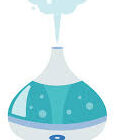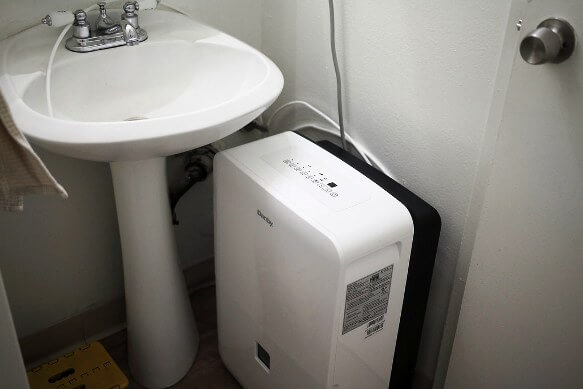How Can You Tell If Your House Is Too Humid? Top Signs
High humidity in your home can cause damage to your property and your health. We say the humidity is too high when the moisture in the air exceeds 50%.
There are many telltale symptoms of high humidity in homes.
Since it may be tricky to guess the level of humidity, you can buy a hygrometer at amazon.com. If the humidity exceeds the recommended level, you will have to invest in a dehumidifier.
Usually, high humidity inside occurs because of pipe leakage in the home. You can also find excess moisture in the bathroom and kitchen when you use hot water.
Also read my article on: How Do I Stop Humidifier White Dust?
If you live in one of the most humid cities in the US, such as Louisiana in New Orleans or Jacksonville in Florida, there will always be excess moisture. In such a case, you would need a dehumidifier to keep things under control.
The main symptoms of high humidity in homes
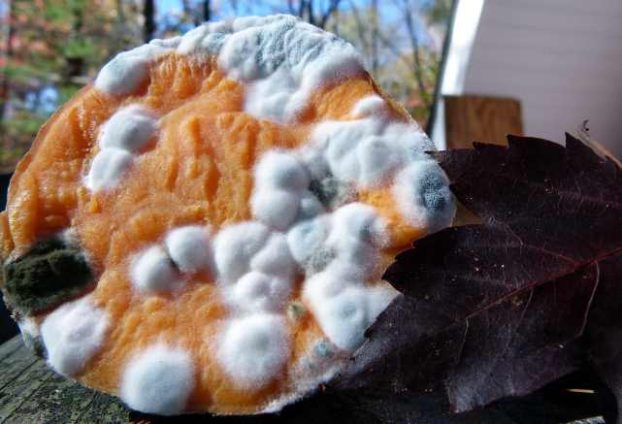
Is 70 percent humidity in a house too high? If it is above 60%, it is too high. So, really, what is a good humidity level for a house? It should be 50%.
It is always a good idea to check for symptoms of high humidity in your home. When there is too little moisture in your indoor air, the house becomes quite uncomfortable. When there is too much humidity, the indoor air can become quite unbearable.
Here are the main indicators of high humidity to check for:
Stuffy air
How can I lower the humidity in my house? One of the telltale signs of high humidity is stuffy air. If you enter your home and stale air meets you at the door, you have more humidity than you need.
Also read: Pure Enrichment humidifier not working
The high level of moisture causes mold and mildew, and that is where the unpleasant smell comes from. The smell indicates that moisture is trapped on the walls, ceiling, and floor.
Use a dehumidifier to solve the problem. It will get rid of the excess moisture in your home and make it uninhabitable to mold.
Allow fresh air into the room. You can open doors and windows. You may as well turn on the fans to circulate the air in your house.
Take movable household items, such as rugs and furniture, outside when it is sunny to kill the mold and bacteria.
Mold and mildew
Is there mold on the floor or items? This is the first telltale sign of high humidity. Mold develops because of is too much moisture in the air.
Other than moisture, mold also needs organic materials from which it can feed, such as food, dust, and grease. Add a warm temperature to the equation, and you have a perfect environment for mold to thrive.
You are more likely to find mold in areas such as the kitchen, bathroom, basement, and laundry room where there is constant use of water.
You need to get rid of mold from your home fast since it can be a source of various health problems. You can use vinegar or bleach as some of the methods recommended for getting rid of mold.
Please note: DO NOT mix vinegar and bleach because they form a toxic gas. Use each alone.
White distilled vinegar is the most preferable treatment since it is more effective and kills the mold at the roots. It is much better than bleach, which only removes mold on the surface.
Mold can cause serious respiratory problems. If you have someone who suffers from asthma or other breathing complications, mold will make life worse for them. It is one of the nastiest indoor allergens.
Besides, mold also makes your clothes smell bad. It has this tendency to grow in the closet where there is minimal light.
It can cause the spread of black, stubborn stains on your clothes. Just get a dehumidifier and reduce the humidity in your home.
Dust mites: symptoms of high humidity in homes
Excess moisture in the air encourages dust mites to thrive. These are tiny indoor allergens. They can hide in your bed linens, clothes, and sofas.
They cause a lot of discomfort and even illness. Most people are allergic to these organisms, and they develop breathing problems.
Also, due to the presence of mildew and mold, you will find other insects in your home, such as beetles and cockroaches.
These insects feed on the mold. Where there is a food source, there is a consumer. That is the way of nature.
When there is high humidity in the air, the dust mites become heavy, and they fall to the floor, bed, and other surfaces.
In summary, moisture encourages the growth of mold and mildew. These attract insects, which may bring rodents.
Peeling paint
Is the paint on the walls of your home peeling, especially in the bathroom or kitchen? Do you see a stain on the walls and ceiling? This is a sign of high humidity in your home.
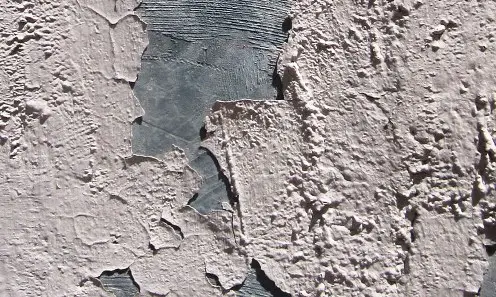
The buildup of moisture on the walls causes the paint coating to bulge as it separates from the walls. Eventually, the paint starts cracking and peeling off.
If you touch the paint with your fingers, you will feel some moisture in it. When there is less than enough humidity in your house, it will cause the paint to dry and flake off.
When there is excess moisture, it will cause the paint to peel off.
Problems breathing
Do you experience difficulty breathing when you get home or in a particular room, such as the bathroom? That is a sign of high humidity.
Moist air encourages the growth of allergens such as dust mites, pollen, and mold, which cause breathing problems. So if you are asthmatic and you get into a room with high humidity, chances are that you will find it difficult to breathe.
Also, humid air causes the airways to tighten, so you end up with breathing problems. The problem can be worse if you have asthma since the symptoms can flare up, and you get an asthma attack.
You may also notice breathing problems in small babies. Their airways are more delicate, so they are more susceptible to excess moisture. Thankfully, all this can be rectified by using a dehumidifier.
Damaged furniture and wood items
If you see the floorboards caving in, woodwork decaying, and mold on the couches or carpet, then you have a reason to be concerned.
There is high humidity in your home. Wood and textile items absorb the excess moisture from the air, become damp, attract mold, and then eventually get damaged.
Such damage happens over time. Therefore, it is good to be on the lookout. You don’t want your electronics to fry or your bed to be covered in mold.
Let’s just say that if you have high humidity in your town, you should always have a dehumidifier on standby.
The good thing is that most dehumidifiers have an auto-on/off feature. That way, when the humidity increases, they turn themselves on automatically.
Clammy feeling on your skin
Do you feel clammy, stuffy, and uncomfortable when at home? Does it feel hotter than it is? Then you have a case of high humidity. Normally, when it is hot, you sweat.
When the sweat evaporates, you cool off. However, if there is high humidity, the sweat does not evaporate from your body to cool you off, so you will feel sticky. It will feel hotter than it is.
You may start feeling sluggish as your body tries to cool off using other means. At this point, the brain and the internal organs receive less blood as the heart pumps it to the extremities. The body may overheat so much that you end up with heat stroke or heat exhaustion.
If there is too much clamminess, it is one of the symptoms of high humidity in homes. Your body tells you when you need to change your environment. Listen to it.
Foggy windows
If you notice the windows of your home turning foggy, there is too much humidity. It is alright to see some fogginess on the kitchen and bathroom windows because of steam from cooking.
However, when it spreads to bedrooms and living rooms, or when it lingers too long on the bathroom windows after using it, you have a humidity problem.
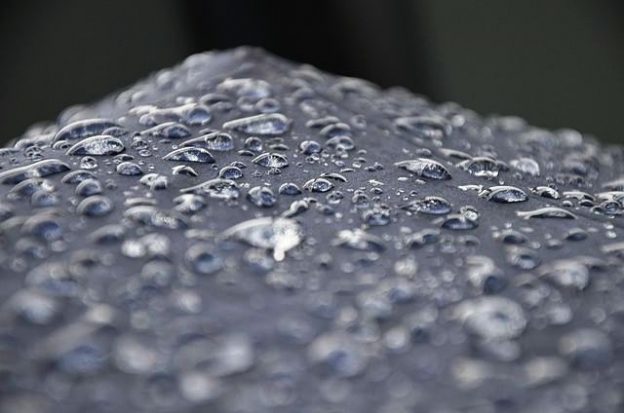
When the humidity is high, moisture in the air gets trapped on the windows, and they become foggy. When there is a cool breeze, the fog will condense and turn into droplets of water. Don’t let it get to that. Just switch on your dehumidifier.
Rotting wood
We already discussed how warping floorboards and damaged furniture show the presence of excess humidity in your home.
Rotting wood can be hard to detect because it hardly reeks. However, you can check at the place where the wood comes into contact with the floor. You can also check your doors if you live in a place with high humidity.
Allergy flare-ups and respiratory infections
If your allergy symptoms heighten when you are at home, it signifies the presence of allergens in your home. High humidity attracts allergens such as dust mites, mold, bacteria, and fungi.
Therefore, if you are asthmatic, and you get an attack when at home, you should know there is high humidity exceeding 60%.
You may not have allergies, but you get hypersensitivity reactions. This could be because of the fungi growing in the humid conditions of your home.
A high infection rate for respiratory diseases is also a sign of high humidity. When there is moisture in the air, bacteria and viruses remain airborne for longer, and they multiply. As such, you are likely to breathe them in and become ill.
Conclusion
These are the ten most common symptoms of high humidity in homes. However, even before you start noticing any of the symptoms, if you live in a high-humidity state, county, city, or town, if you live close to the coastline, just get a good dehumidifier. You will need it.
